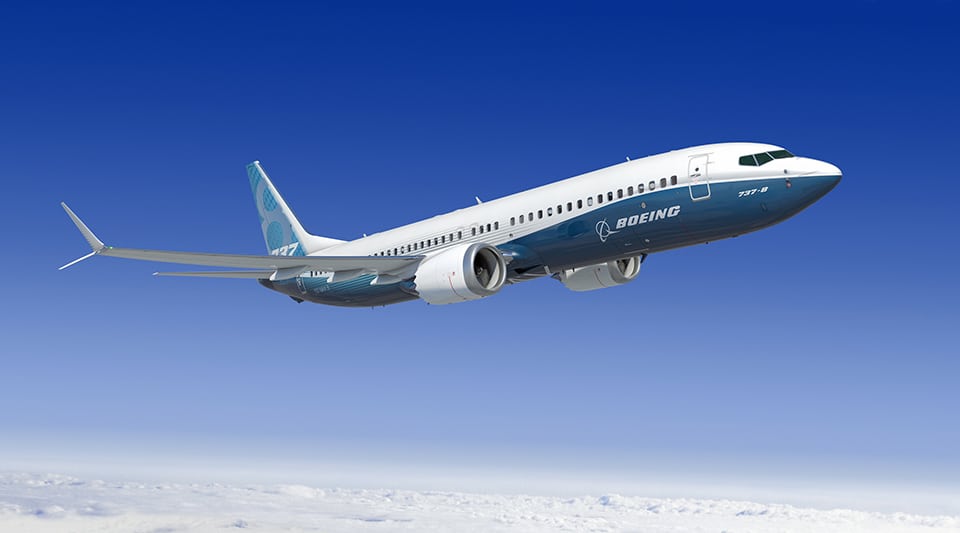Aerospace
Boeing to Resell Some Max Jets Ordered by Chinese Airlines
These aircraft were built for Chinese airlines but are unable to be delivered. #B737max

The Chinese aviation regulator has not given the Boeing 737 Max plane the go-ahead to fly after two catastrophic tragedies, but Boeing officials indicated on Thursday that they will find new buyers for the aircraft. These aircraft were built for Chinese airlines but are unable to be delivered.
Boeing received the most orders at the Farnborough airshows in 2022.(Opens in a new browser tab)
Boeing anticipates that the action will help reduce the inventory of undeliverable Max jets that accumulated while the aircraft were grounded around the world. The decision, meanwhile, runs the risk of escalating hostilities between the aircraft manufacturer and China, which was previously Boeing’s top market for the Max.
10 things about Boeing 737 max aircraft.(Opens in a new browser tab)
Boeing, based in Arlington, Virginia, has 290 undeliverable 737s in its inventory as of June 30, with around half of them going to China, according to company officials. The number that might be offered to fresh buyers was not disclosed by the corporation.
West stated at a Morgan Stanley investor conference that Boeing did not make the decision lightly because China “is a key market.” However, he voiced confidence in Boeing’s ability to find new customers for the aircraft, which list for $100 million and above – although airlines frequently receive significant discounts.
When China’s three biggest airlines purchased roughly 300 Airbus aircraft in July, Boeing’s dependence on the Chinese market was made clear.
The former president Donald Trump’s trade dispute with China caused strained ties between the United States and China. Boeing CEO David Calhoun stated on Thursday that although the company has benefited from free trade with China, recent “geopolitical events” will “slow us down.”

Aerospace
Boeing Transfers Rocket Stage to NASA, Paving Way for Human Moon Mission

Boeing has achieved a significant milestone by providing NASA with the second core stage of the Space Launch System (SLS) rocket.
This crucial component, crafted at NASA’s Michoud Assembly Facility (MAF), is set to propel the Artemis II crew into lunar orbit, marking humanity’s return to deep space after a 50-year hiatus.
The monumental Boeing-built rocket stage, the largest element of the Artemis II mission, will embark on a journey aboard the Pegasus barge, traveling 900 miles to NASA’s Kennedy Space Center.
Comparison of two legendary aircraft B777x vs B747 aircraft:Click here
Upon arrival, it will be meticulously integrated with other essential Artemis II components, including the upper stage, solid rocket boosters, and NASA’s Orion spacecraft within the iconic Vehicle Assembly Building. This intricate integration process is a vital step toward the eagerly anticipated Artemis II launch, slated for 2025.
“Boeing-built products helped land humankind on the moon in 1969, and we’re proud to continue that legacy through the Artemis generation,” remarked Dave Dutcher, vice president and program manager for Boeing’s SLS program. “Together, with NASA and our industry partners and suppliers, we are building the world’s most capable rocket and paving the way to deep space through America’s rocket factory in New Orleans.”
NASA, Lockheed Martin Reveal X-59 Quiet Supersonic Aircraft:Click here
The delivery of Core Stage 2 marks a significant achievement in the evolution of the SLS rocket. Towering over 200 feet and powered by four RS-25 engines, this core stage, coupled with two solid-fueled booster rockets, will generate a staggering 8.8 million pounds of thrust. This immense power is crucial to launching Artemis II and future missions into the vast expanse of space.
The SLS rocket stands unparalleled in its capability to transport both crew and substantial cargo to the moon and beyond in a single launch. Its extraordinary capacity will facilitate the delivery of human-rated spacecraft, habitats, and scientific missions to destinations including the moon and Mars, ushering in a new era of space exploration.
-

 Travel1 week ago
Travel1 week agoAir India to Expand US Operations with Three New Routes After a Decade
-

 Travel2 weeks ago
Travel2 weeks agoWhy We Should Avoid These Stamps in a Passport
-

 Airlines1 month ago
Airlines1 month agoInvestigations Reveal Fake Chinese Titanium in Boeing and Airbus Jets
-

 Tech4 weeks ago
Tech4 weeks agoChina’s CATL Plans 1,800-Mile Electric Plane Launch by 2027
-

 Airport3 days ago
Airport3 days agoTop 10 Largest Airports in the World by Size
-

 Aerospace4 weeks ago
Aerospace4 weeks agoChina’s Fighter Jets Turn Wings into Autonomous Drones
-

 Airlines4 days ago
Airlines4 days agoAir India Rolls Out A350s for Delhi-New York JFK and Newark Routes
-

 Defence3 weeks ago
Defence3 weeks agoBoeing Enhances Chinook with New Engines and Block II Upgrades at $96 Million







